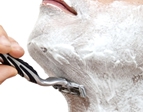You are here: Home » Testing & Characterization » Surface Analysis
Surface Analysis
At Lucideon, we specialize in surface, near surface and interface analysis.
Surface analysis techniques provide a powerful testing and characterization service for many applications and industries. The surfaces of products play a significant role in product behavior and interaction, and features on a microscopic level can often provide insight into what those properties are, and how they work. At Lucideon we apply surface analysis techniques to help understand how materials, surfaces and coatings affect performance.
Our world-leading surface science facilities allow characterization of elements and their isotopes, chemical groups, polymers and surface additives. Surface analysis techniques allow us to measure elemental and molecular chemistry of all elements from H to U in the ppm – ppb range, and perform materials characterization on any material, including drugs.
Elemental and molecular imaging can be used to map across an outer surface or cross section of a material or device.
Surfaces can be analyzed to identify the presence of dopants, process contaminants, impurities and surface treatments to depths of tens of microns. Depth analysis allows characterization of layer structures, buried features and surface treatments. Multi-element depth profiling can be performed to depths from nm to tens of µm.
Typical applications include profiling semiconductor device features, compositional analysis of glass layer structures, investigation of stains and rinse residues, monitoring of surface cleaning treatments, characterizing changes in polymer functionality following plasma treatments, identifying contaminants, solving adhesive/bonding issues, and in-depth investigations of tribological surfaces, including wear scars. Non-destructive testing can be performed so samples don’t have to be sacrificed.
Surface analysis techniques are compatible with retrospective 3D mapping techniques to show chemical maps and depth profiles. Chemical mapping can show features down to <1 micron in size, a useful technique for the clear diagnosis of fault areas, among other applications. Surface Topography is used to generate 3D maps on nm scale showing microstructure, wear, etc. and can also be applied to cross sectional materials to give extended information through a structure, which is particularly useful for complex, thick layered materials.
3D Visualization of Human Hair following Conditioner Treatments
The video clip below depicts the 3D visualization of a human hair surface, by White Light Interferometry, measuring the surface topography and roughness after shampoo-conditioner treatments.
Our experts are actively involved in a number of research programmes and EU projects, as well as one-off analyses, which include:
- Troubleshooting problems
- Defending product claims
- Settling commercial liability disputes
- Reverse engineering of competitor products
- Validating new products and processes.
Analytical Techniques
- XPS (X-ray Photoelectron Spectroscopy)
- Dynamic SIMS (Secondary Ion Mass Spectrometry)
- ToF-SIMS (Time-of-Flight Secondary Ion Mass Spectrometry)
- WLI (White Light Interferometry)
- SEM/EDX (Scanning Electron Microscopy / Energy Dispersive Analysis)
- 3DSEM (Three Dimensional Scanning Electron Microscopy)
- XRD (X-Ray Diffraction)
- FTIR (Fourier Transform Infrared Analysis)
- AFM (Atomic Force Microscopy)
- TEM (Transmission Electron Microscopy)
- Raman Spectroscopy.

